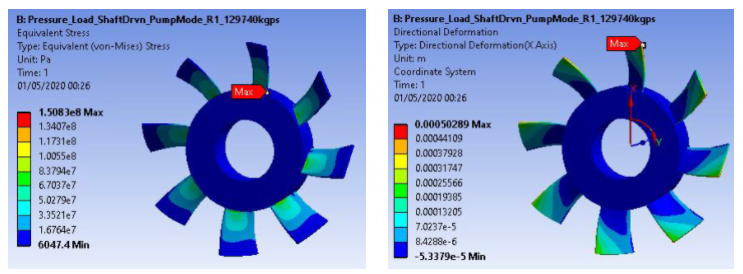Second Update on ALPHEUS Work Package 3
In WP3, the Power Take-Off (PTO) and machine-side control are studied and designed. One part of this work package deals with rotor fatigue.
One of the overarching aims of the ALPHEUS project is to show the viability of using low head pumped hydro to improve the stability of the grid. This is done by regulating the power of the device as a function of the actual state of the grid (typically its frequency).
Changing the power output of an electric machine inevitably leads to time-varying mechanical stresses and thereby additional fatigue on various parts of the system. In order to quantify this extra fatigue and relate it to the control of the electric machine, the following steps are taken
- Measured data of grid frequency over a period of 10 years is used
- A simple model of the desired response of the planned device takes the measured data and calculates desired power output
- The corresponding operating point is found with the help of CFD simulations
- The operating point is translated into stress in the material using FEM simulations
- The calculated stress as a function of time is finally used to estimate the resulting fatigue
The results of this investigation can be used to optimize the control of the machine for minimized fatigue stress while still meeting set goals for participation in grid stability.


